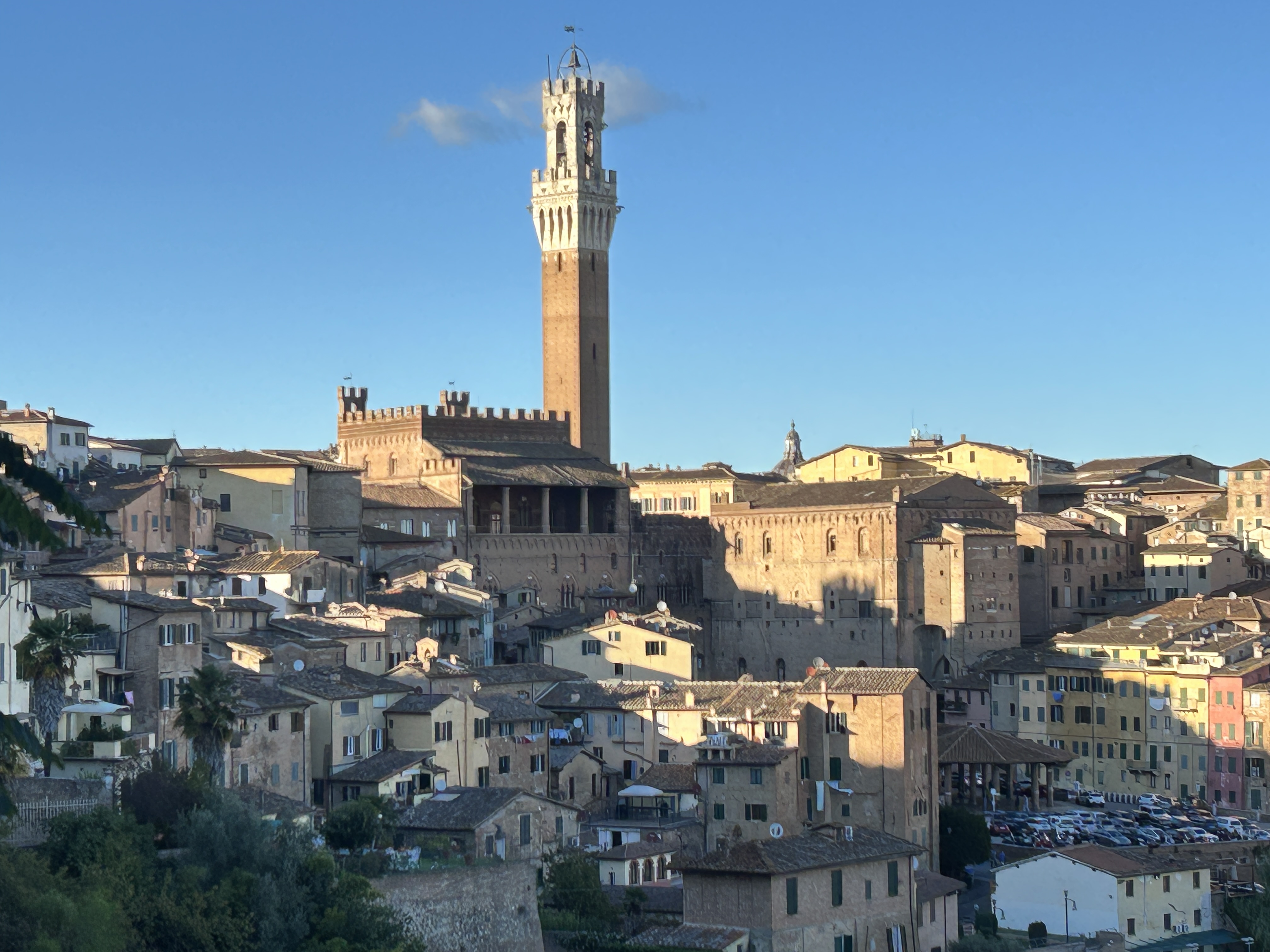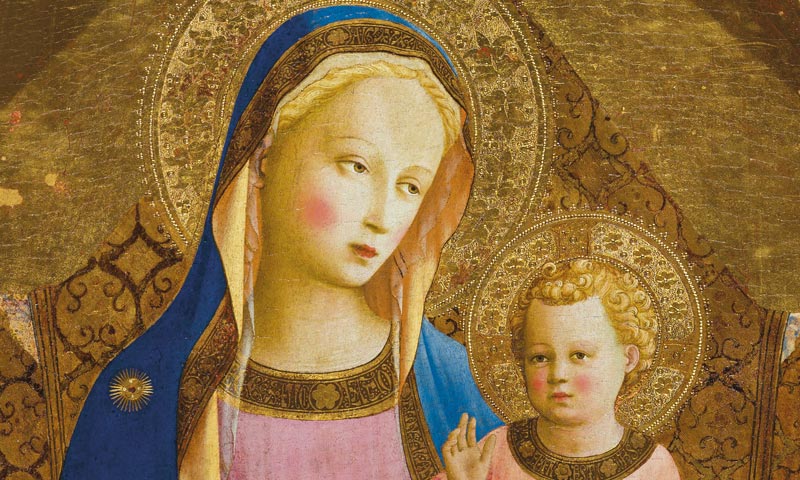Doumina Whyman, founder of the Enthusiastic Traveler, shares her notes
on what to do and see in Siena, as well as some interesting facts on the famous
Siena horse race, Il Palio which is held twice each year, on 2 July and 16
August.
Obvious things to see: Siena’s Duomo. Church of Santa Caterina. San
Domenico.
To do: Stroll Siena’s 17 different neighborhoods.
They are called Contrada, which is one, or Contrade, CON-TRA-DAY, more than one,
and represented by an animal. Not your normal run of the mill house cat, or
dog, or even a horse!
The seventeen contrade are: Aquila (Eagle) - Bruco (Caterpillar) - Chiocciola (Snail) - Civetta (Little
Owl) - Drago (Dragon) - Giraffa (Giraffe) - Istrice (Crested
Porcupine) - Leocorno (Unicorn) - Lupa (She-Wolf) - Nicchio (Seashell) - Oca (Goose) - Onda (Wave) - Pantera (Panther) - Selva (Forest) - Tartuca (Tortoise) - Torre (Tower) - Valdimontone (Valley of the Ram).
Siena is not too big to do a lot of wandering and always feel safe.
Recommended: A good guide who can
get you in to the nooks and crannies and hidden museums. Otherwise you will just be a tourist
wandering around without the full benefit of the inside story.
What to eat:
For lunch you can take a seat in the Il Campo: Lined with tables and
chairs, outdoor seating and faster and more average food, it’s a good place to
watch the world go by.
Siena has some Michelin stars
and two that are typically Tuscan are: Osteria Le Logge - people either love the attitude or not, but
the food is good. La Taverna Di San Giuseppe.
If you follow the SLOW FOOD
CIRCUIT: You might enjoy Osteria Babazuf
or La Sosta Al Violante. Also Michelin Stars.Slow food is a movement meant to preserve small and endangered crops of
the region. Government subsidized to preserve, and to cultivate, bringing lost crops
back to life. Slow Food is an organization that promotes local food and traditional
cooking, founded by Carlo Petrini in Italy in 1986 and has since spread
worldwide.
Bakery not to miss: Panifico il Magnifico. Try the Panpepato (spiced version of the Panforte), the Pan co' santi (a
delicious fruit loaf, only available around November) and the famous cantucci
biscuits. You’ll be able to sample some
things as well.
Further Afield: If you are in the area for wine tasting plan your path to cross San
Giovanni D’Asso, the land of truffles. Call one day ahead, and ask for the truffle Lasagne. If you are lucky, Donatella might make it for
you special! The Place is Osteria delle Crete. +39 0577 803076
Horseracing in Siena!
Of the many times that I have entered the Il Campo, (meaning the field)
in Siena, I am transported to a place in my mind’s eye of 10 horses dangerously
and recklessly charging around the shell-shaped piazza, and imagining the horror
of seeing one of them fall.
Piazza del Campo
A medieval and cruel ritual, it lasts just 90 seconds and has been
depicted in movies, books, and TV shows: Where horses and jockeys fall, and
familial ties run so deep that marriages are divided during the race.
In these photos, you can see the apartments whose windows and terraces
hang over the square. These apartments and homes are privileged real estate in
Siena, whose inhabitants have a perfect birds-eye view of the race called the
Palio.
This 90-second horse-race is a mob scene twice a year in Siena. It
determines which neighborhood hypothetically "rules" the city for a
year.
I was invited once, although never went, to the terrace of a famous
Brunello winemaker. It hung exactly over the Piazza, and Tina Turner was going
to be a guest. It was just 1,000 Euro per person to enjoy antipasti, and
prosecco, while watching the race. Other famous people who rent a terrace over
the piazza to watch the race are the likes of Sting or Madonna, among many
others.
The race is held twice each year, on 2 July and 16 August. Ten horses
and riders, bareback and dressed in the appropriate colors, represent ten of
the seventeen Contrade, or city wards. In each race, only ten of the seventeen
Contrade participates. The seven which did not participate in the previous
year's Palio and three others chosen by drawing lots.
The flags and emblems of the 17 different contrade
Jockeys can pretty much do anything to win. Other than tugging on an
opponent’s reins, jockeys are allowed to do anything to distract other jockeys
during the race. This means that, frequently, some jockeys will actually fall
off their horses! But, no matter — the rules state that as long as your horse
crosses the finish line first, you don’t need to be on it to win.
The race itself, in which the jockeys ride bareback, circles the Piazza
del Campo, on which a thick layer of dirt and straw has been laid. The race is
run for three laps of the piazza and usually lasts no more than 90 seconds. It
is common for a few of the jockeys to be thrown off their horses while making
the treacherous turns in the piazza, and indeed, it is not unusual to see un-mounted
horses finishing the race without their jockeys.
How deep is this tradition you
may ask that goes back to Medieval times?
-When a couple marries outside of their neighborhood, at race time, they
divide and return to their perspective place to cheer on their Contrada. Real
problems arise if a child is born because sides or Contrada must be appointed
to the child. It can break the parent's heart if the neighborhood they are from
is not chosen for the child.
-When the horses are chosen and brought to Siena just before the race
and housed in a stable, or secret place, great pains are taken to protect the
animal by assigning a usually bi-partisan friend of the family. Many times the
horse sitter, and sometimes even the jockey himself have been paid off to
poison the horse, especially if it is a favorite.
-When there is a winner, the neighborhood celebrates for weeks. The
Contrada, or neighborhood, is elaborately decorated and in the street has a
long table with many chairs to seat all of the people who live in the
neighborhood for a celebratory dinner. But the main seat of honor is maintained
at the end of the table. You will find a place with no chair, laden with hay,
for the honorary guest to join; the victorious horse.
In the center of the winning neighborhood, a table to accommodate all
who live there will celebrate their victory!
Beginning in early winter, the Contrada leaders talk and develop
strategies, making contacts with the jockeys and horse owners. These leaders
prepare those who will race in the Piazza del Campo or take part in minor
Palios elsewhere in nearby towns and bring them to training courses organized
by the city in the spring.
The full activities of the Palio start to grow in momentum towards the
end of May, with the drawing of lots of the three remaining Contrade that will
join the seven that have won the right to race. With districts and teams
outlined, Talks begin about "deals" (engagement of jockeys) and
"parties" (secret pacts for the win), despite not knowing which horse
they will draw in the lot.
About a week before the race, the Palio (drappellone) itself is
presented to the city, which has commissioned a local artist (in the case of
the Palio of July) or internationally recognized artist (in the case of the
Palio of August or a special Palio) to create the prize. Also at this time,
visits occur to the horses which will be presented for the lottery.
The most successful ward is Oca, the Goose, which has won 63 races (at
least according to their records, which start from 1644), followed by
Chiocciola, the Snail, with 51, and Tartuca, the Tortoise, with 46. Oca is also
the Contrada with the most wins in recent history (from 1900 to 2010) with 21
victories, followed by Selva, the Forest, with 18, and Drago, the Dragon, with
17.
Flags and other decorations let you know when strolling around Siena,
that this particular neighborhood has won the Palio.











